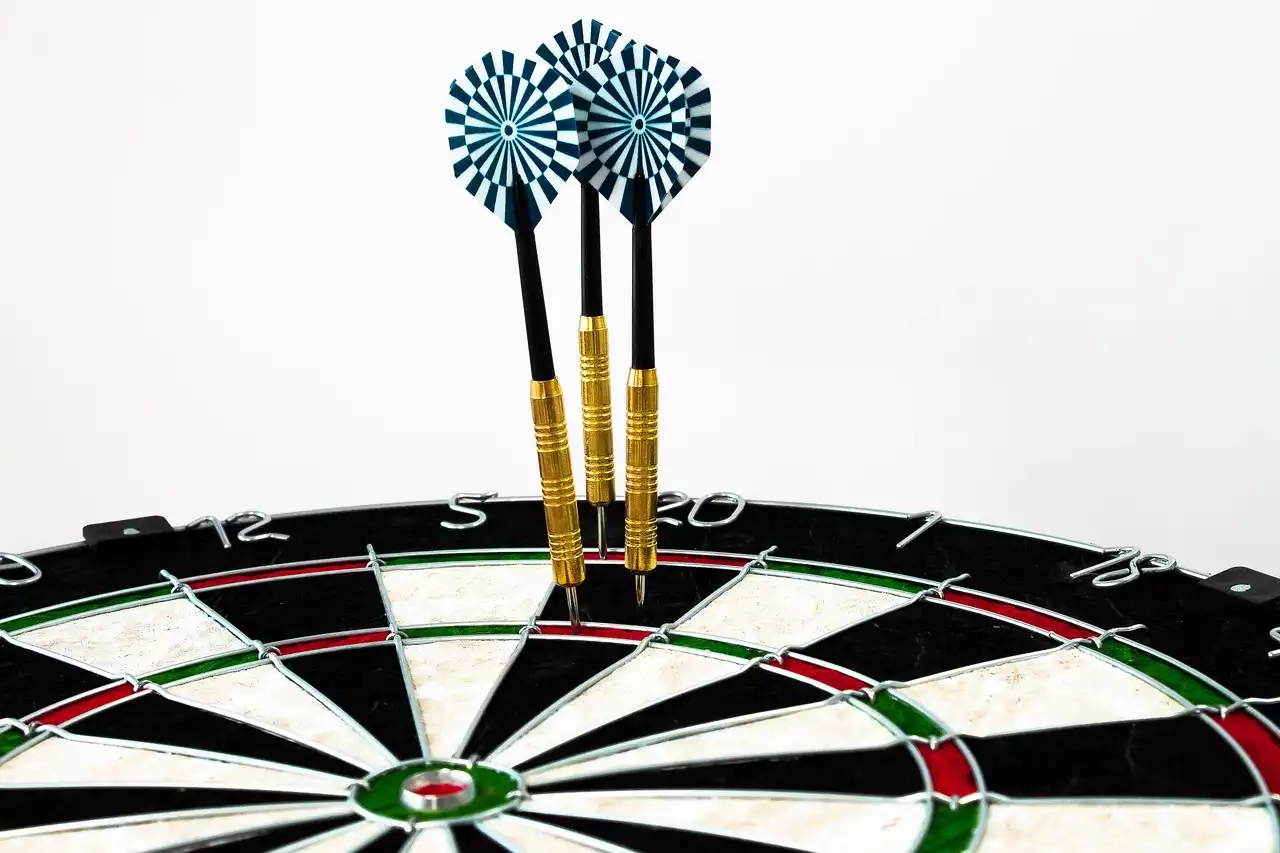History of Darts
Darts, as we know it today, has its roots in ancient history. The origins of the game can be traced back to the time of the ancient Greeks and Romans, where soldiers used to throw small arrows at the bottom of an upturned wine barrel. However, it wasn't until the late 19th century that darts began to resemble the modern game we know today. The game gained popularity in the pubs of England, where players would throw short arrows at a wooden target. Over time, the game evolved, and standardized rules were established. In the early 20th century, darts became an organized sport, and various leagues and tournaments were formed. Today, darts is played and enjoyed by millions of people worldwide, with professional players competing for prestigious titles and substantial prize money.
Components of a Dart: Barrel, Shaft, and Flight
To understand darts fully, it's essential to familiarize yourself with its components. A dart consists of three main parts: the barrel, the shaft, and the flight. The barrel is the front part of the dart, which is held and thrown by the player. It is typically made of brass, tungsten, or a combination of both. The weight and shape of the barrel can significantly impact the dart's flight and accuracy. The shaft, also known as the stem, connects the barrel to the flight. It plays a crucial role in stabilizing the dart during its flight. Shafts are available in various materials, lengths, and shapes, allowing players to customize their darts to suit their throwing style. Lastly, the flight is the rear part of the dart, designed to provide stability and control. Flights come in different shapes, such as standard, slim, kite, and pear, each offering distinct aerodynamic properties.
Different Types of Dart Barrels
Dart barrels come in various materials, each with its own unique characteristics. Brass barrels are the most common and affordable option. They are relatively lightweight and provide a good grip. However, they may wear down quickly due to their soft nature. On the other end of the spectrum, tungsten barrels are denser and more durable. Tungsten is a heavy metal that allows for a slimmer barrel design, resulting in tighter groupings. The percentage of tungsten in a barrel determines its quality and price, with higher percentages generally indicating better performance. Other materials used for dart barrels include nickel-silver, which offers a compromise between brass and tungsten, and coated alloys, which provide enhanced grip and style.
Choosing the Right Dart Weight and Balance
When it comes to choosing the right dart weight, there is no one-size-fits-all answer. The weight of a dart largely depends on personal preference and throwing style. Heavier darts may provide more stability and penetrate the board deeper, but they require more strength to throw accurately. Lighter darts, on the other hand, allow for faster throws and require less effort but may be more susceptible to external factors like air currents. It's essential to experiment with different weights to find the one that feels comfortable and suits your playing style. Additionally, the balance of a dart refers to how the weight is distributed along the barrel. A front-loaded barrel offers more control and stability, while a rear-loaded barrel allows for a faster throw. Finding the right balance is crucial for achieving consistent and accurate throws.
Understanding Dart Shafts and Their Impact on Performance
The shaft of a dart plays a significant role in its overall performance. Different shaft lengths and materials can affect the trajectory and stability of the dart during flight. Shorter shafts provide less leverage, resulting in a flatter trajectory and tighter groupings. They are commonly used by players who prefer a faster, more aggressive throwing style. Longer shafts, on the other hand, offer more stability and control, making them ideal for players who prefer a slower, more deliberate throw. In addition to length, the material of the shaft can also impact performance. Nylon shafts are lightweight and flexible, allowing for tighter grouping, while aluminum shafts offer durability and strength. Carbon fiber shafts provide a balance between the two, offering both strength and lightweight properties.
Exploring the Different Types of Dart Flights
The flight of a dart is responsible for its stability and trajectory. There are several different types of dart flights available, each with its own unique characteristics. Standard flights are the most common and provide a good balance between stability and speed. They are suitable for most players and throwing styles. Slim flights, as the name suggests, are thinner and lighter than standard flights. They offer less drag and are ideal for players who prefer faster throws. Kite flights have a wider surface area, providing more stability during flight. They are commonly used by players who prefer a slower, more controlled throw. Lastly, pear flights are wider at the bottom and narrower at the top, offering a compromise between stability and speed. Experimenting with different flights can help fine-tune your dart's flight and improve your overall performance.
Dart Accessories: Cases, Dartboards, and Scoreboards
To fully enjoy the game of darts, it's crucial to have the right accessories. A dart case is essential for storing and protecting your darts. It should have compartments to keep your darts organized and secure. Dartboards come in various materials, such as sisal and electronic, and it's important to choose one that suits your needs and preferences. Sisal dartboards are the standard choice for serious players, as they offer better durability and self-healing properties. Electronic dartboards, on the other hand, come with built-in scoring systems and a variety of game options. Scoreboards are used to keep track of scores during a game. They can be as simple as a pen and paper or as advanced as electronic scorekeeping devices. Having the right accessories ensures that you can focus on the game without any distractions.
Dart Throwing Techniques and Tips for Beginners
Throwing a dart may seem simple, but it requires practice and technique to achieve consistent and accurate throws. Here are some tips to help beginners improve their throwing technique:
1. Stance: Stand with your dominant foot slightly forward, shoulder-width apart. Keep your body relaxed and balanced.
2. Grip: Find a grip that feels comfortable and secure. The most common grips are the pencil grip, where the dart is held between the thumb and index finger, and the three-finger grip, where the dart is held with the thumb, index, and middle fingers.
3. Aim: Focus on the target and align your dominant eye with the target. Keep your arm parallel to the ground and your elbow at a 90-degree angle.
4. Release: Follow through with your throw, keeping your wrist firm and your arm straight. Avoid jerking or twisting your arm during the release.
5. Practice: The key to improving your dart throwing technique is consistent practice. Start with shorter distances and gradually increase the distance as you become more comfortable and accurate.
Popular Dart Games and Tournaments
Darts offers a wide range of games and formats, catering to players of all skill levels. Some popular dart games include:
1. 501: Players start with a score of 501 and take turns throwing three darts. The goal is to reach zero by subtracting the score achieved with each throw.
2. Cricket: The objective is to "close" certain numbers and hit the bullseye. Once a number is closed, the player can score points by hitting that number or the bullseye.
3. Around the Clock: Players take turns throwing one dart at each number from 1 to 20 in sequential order. The first player to hit all the numbers and the bullseye wins.
In addition to casual games, darts also has a competitive side with various tournaments held worldwide. The Professional Darts Corporation (PDC) and the British Darts Organisation (BDO) are the two major governing bodies in professional darts. These organizations host tournaments such as the PDC World Darts Championship and the BDO World Darts Championship, where top players compete for substantial prize money and prestigious titles.









